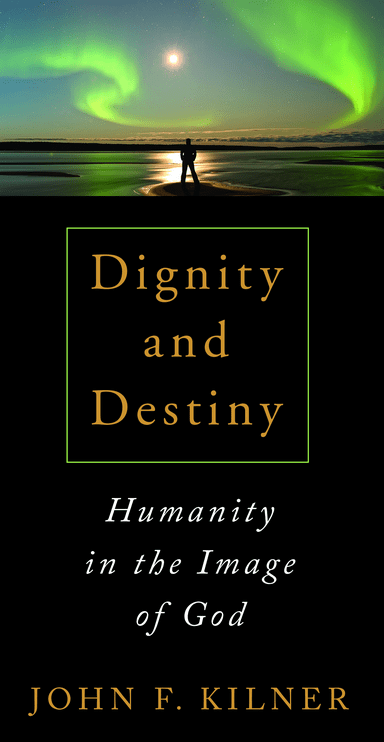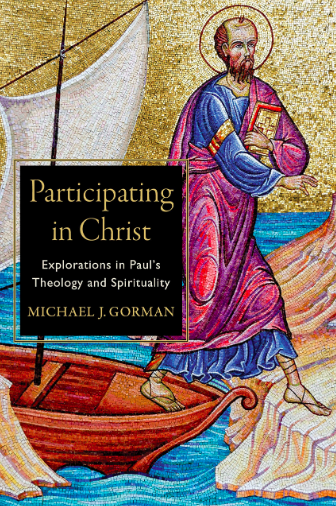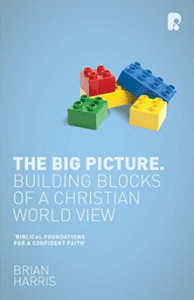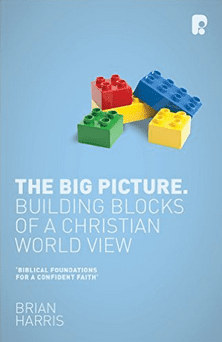 One of the gifts of the Bible to the lot of every human being who has ever lived, who is living and who will ever live is that each is made in God’s image. The gift is on the table but unwrapping the gift to understand what it means is the challenge. John F. Kilner, Dignity and Destiny: Humanity in the Image of God, unwraps the gift into two primary terms.
One of the gifts of the Bible to the lot of every human being who has ever lived, who is living and who will ever live is that each is made in God’s image. The gift is on the table but unwrapping the gift to understand what it means is the challenge. John F. Kilner, Dignity and Destiny: Humanity in the Image of God, unwraps the gift into two primary terms.
To be made in God’s image meant to be in connection to God through Christ and to be designed for reflection of God and God’s glory. One might then think there’s nothing new here, or at least no renewed emphasis, since one might think this means Image as relationality and Image as being. But Kilner picks bones with almost everyone in a book that will become the starting point for all those with theological or ethical orientations. Biblical folks will continue to begin with Richard Middleton’s The Liberating Image.
People have used the image of God for liberation and destruction and part of the problem is that there is little attention in the Bible to the expression “image of God,” and little definition, and we are in danger of importing both theological and cultural ideas onto the meaning of the expression “image of God.” Yet, Kilner wades his way through the Bible’s evidence and the many directions of literature to focus — admirably — on Christ as the true image of God. He is the enabler and the standard of what “image” means.
I agree that a bad view of God’s’ image can lead to bad moral actions, not least murder or exploitation, and I agree that theology ought to shape behavior. The fact is that many have had — so they have — more than a healthy view of the image of God and have not seen their way to treating others with the dignity or respect they deserve. E.g., many affirm that women are in God’s image but don’t treat them as they ought to be treated; many affirm the same for children or for those in other nations or who are committed to another religion. Put differently, what we believe doesn’t always work out in practice.
Kilner’s book will be known for its critique of all other approaches to the meaning of image of God, and his approach is to show weaknesses or to suggest potential negative implications of other views of the image of God. So, for instance, he pushes against interpretations that focus on how humans are excellent, how they are like God, and how they are unlike animals.
He also pushes against the view that something happened — negatively — to the image of God in the fall: thus, he doesn’t think the Bible supports the notion that the image of God was completely lost, virtually lost, partly lost, or that its appearance was compromised. The image of God then is in tact in each and every human being. This pushes the problem of the impact of sin onto other areas of anthropology, and he may well be right here.
Kilner also finds misunderstandings in the image of God in those who focus on human attributes — that is, those who focus on one of these four Rs: reason, righteousness, rulership or relationship.
For him the image of God is about our special connection to God and how God intends for that connection to result in humans reflecting God in many ways. So, again, we are at these two terms: connection to God in Christ and reflection of God now and in the future by growing in the attributes of renewal into Christlikeness: thus, reason, righteousness, rulership and relationship. He has good sections on the importance of love. The closer he connects these four attributes to the meaning of “reflection” the less the distinction between attributes and image of God.
Kilner, I think it would be fair and not uncharitable to say, is neither an exegete nor a theologian. Yes, he has done his homework well — he shows a good grasp of the exegetical issues (though we could have had much more on the ancient near east and historical contexts; he know the Bible folks today are thinking image of God refers to “rulership”) and of the theological issues. Yes, he has an admirable grasp of the astounding bibliography at work in discussion of a topic like this. There is nothing here that doesn’t represent standard academic scholarship on the topic. This book is a singular accomplishment.
Yet, the book is constrained by his discipline: ethics or bioethics. He presses the issues toward ethical implications. A big example is his focus in the book — and in the title — on the word “dignity,” which tosses the weight onto anthropology or the significance of humans and tends to minimize the function. I would, in other words, add to his “connection and reflection” the word “function.” His approach comes from an ethical angle and it constrains the implications. Thus, he connects image of God to “rights” and says “people have rights” but his theological orientation leads him then to say “they do not have a right to those rights” (318). Interesting sentence, I have to admit, but I wonder if “rights” hasn’t been undone by saying so. Nonetheless, this isn’t a concern to me. What is that he moves toward “rights” and this is a modern ethical category drawn far more from the Enlightenment than from the biblical world, where the category of “responsibility” is probably closer to the ground. Do people, I would ask, because they are made in God’s image have a “right” to the kind of “happiness” that national welfare brings?
That is, he concludes that since people are made in God’s image and it has not been damaged then there should be respect for weakest and the most marginalized, for those with disabilities, those with bodily characteristics (an odd way of talking about race and ethnicity), women and those who are not Christians. He’s right in all this. But if one were to focus on other dimensions of “image of God,” say “rule,” then other elements would come to the surface as well.
As I said above, this book will become the go-to book for those who want to explore “image of God” in a theo-ethical context and in that context the book is a great achievement.












